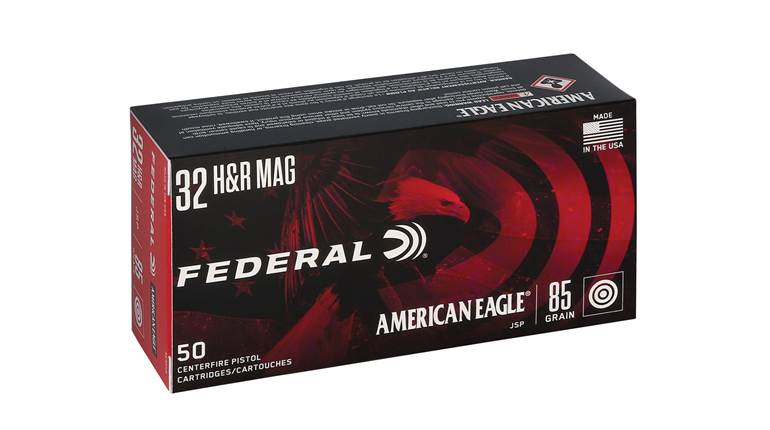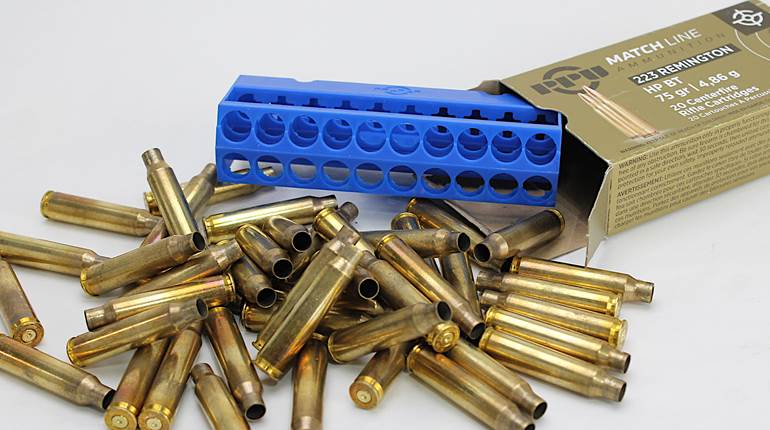In case you hadn’t noticed, the great ammo shortage we are experiencing has extended well into 2021. It is to the point that my friend Jason Vanderbrink, who also happens to be the president of Federal Premium Ammunition, CCI-Speer and Remington Ammunition, took time out to further address the concerns of his customers.
In an earlier video, Jason received 13,000 comments. In this latest one, he addresses some of the topics brought up by those consumers.
First and foremost, he addressed the safety of the thousands of his employees in Minnesota, Arkansas and Idaho. Just so you know, the Remington plant in Arkansas—gutshot by previous bad management—is making more and ammo everyday under its new ownership and management. As pointed out by Vanderbrink’s friendly competitor Jason Hornady, when a guy who runs a bullet press gets sick or quarantined, they can’t send the machine home with him.
One of the symptoms of the surge in demand has been that people looking for defensive ammunition have substituted hunting ammunition for defensive ammunition when they could not find the latter. Remember, there are an estimated 7 million new shooters, putting more demand into an already strained supply chain.
Also, hunting licenses sales are up this year, which is great for a future. The problem occurs when buckshot isn’t available. Heavy goose loads or the next best thing at the gun shop counter get bought by people who aren’t hunters. Then hunters can’t find what they need and get mad. It’s simple substitution. You can’t get what you want? You buy the next best thing, which resulted in severe shortages of both center-fire rifle and shotshell ammunition last fall.
Primers are on everyone’s mind these days, and I have personally witnessed friends who usually buy a few here or there stocking up with literally tens of thousands. One has accumulated enough that I think Federal might be tempted to buy some back from him. He has what is likely several lifetimes worth of primers in his shop, safely and properly stored, but every one he bought is one less in commerce anymore.
The thing you have to realize about primers is they are really only made in four places in the United States: Federal in Minnesota, CCI in Idaho, Remington in Arkansas and Winchester in Mississippi. As demand for loaded ammunition increases, the primers that would go to handloading consumers end up being run through the factories producing loaded ammunition. And primer capacity is something that cannot be easily increased. As Jason points out, if Federal needs those primers for loaded ammunition, they cannot be diverted to handloaders.
Jason also addresses adding a new factory, which is neither inexpensive nor easy. On “American Rifleman Television,” we have been inside most of the major ammunition factories in the United States, and as soon as we get our COVID vaccines, we are on our way to Remington in Arkansas. I thought this would be a great opportunity to actually show you how ammunition is made. Every company does it just a little bit differently, but from our previous visits to Federal Premium, Winchester and Hornady, you can get a sense of not only what is involved, but also why it’s not easy to just put up a new plant.
Jason called the workers and the products from the Federal, CCI and Remington factories—as well as other American ammo makers—“the heart of American manufacturing.” And those folks are working their hearts out. Take a few minutes, and look at what these men and women do every day to produce the best ammunition possible—and as much as they are able.
Explore The NRA Universe Of Websites
- Clubs and Associations
- Competitive Shooting
- Events and Entertainment
-
Firearms Training
- NRA Gun Safety Rules
- Firearm Training
- Become An NRA Instructor
- Become A Training Counselor
- NRA Range Safety Officers
- Shooting Sports Coach Development
- Adaptive Shooting
- NRA Gunsmithing Schools
- NRA Online Training
- NRA Program Materials Center
- NRA Marksmanship Qualification Program
- Find A Course
- NRA CCW
- NRA Training Course Catalog
- Giving
- History
-
Hunting
- Hunter Education
- Youth Hunter Education Challenge
- NRA Whittington Center
- NRA Hunters' Leadership Forum
- Great American Outdoor Show
- Hunters for the Hungry
- American Hunter
- Hunting Legislation Issues
- State Hunting Resources
- NRA Institute for Legislative Action
- American Rifleman
- Adaptive Hunting Database
- Outdoor Adventure Partner of the NRA
- Law Enforcement, Military, Security
- Media and Publications
-
Membership
- Join The NRA
- NRA Member Benefits
- Manage Your Membership
- NRA Store
- NRA Whittington Center
- NRA Endorsed Member Insurance
- NRA Membership Recruiting
- NRA State Associations
- NRA Membership For Women
- NRA Life Membership
- Renew or Upgrade Your Membership
- NRA Junior Membership
- NRA Business Alliance
- NRA Industry Ally Program
- Politics And Legislation
-
Recreational Shooting
- America's Rifle Challenge
- NRA Whittington Center
- Women's Wilderness Escape
- NRA Day
- The NRA Range
- Home Air Gun Program
- Adaptive Shooting
- Range Services
- NRA Member Benefits
- Great American Outdoor Show
- NRA Springfield M1A Match
- Shooting Illustrated
- Firearm Training
- NRA Marksmanship Qualification Program
- NRA Training Course Catalog
- Women On Target® Instructional Shooting Clinics
- Safety and Education
- Scholarships, Awards and Contests
- Shopping
- Volunteering
-
Women's Interests
- NRA Membership For Women
- NRA Women's Network
- Women On Target® Instructional Shooting Clinics
- Refuse To Be A Victim®
- Women's Wilderness Escape
- Women's Programs Endowment
- Jeanne E. Bray Memorial Scholarship
- Marion P. Hammer Women Of Distinction Award
- Sybil Ludington Women's Freedom Award
- Women's Wildlife Management / Conservation Scholarship
- Become An NRA Instructor
-
Youth Interests
- Eddie Eagle Treehouse
- Scholarships, Awards & Contests
- NRA Day
- NRA Marksmanship Qualification Program
- Youth Education Summit
- Adventure Camp
- Youth Hunter Education Challenge
- National Junior Shooting Camps
- Youth Wildlife Art Contest
- Home Air Gun Program
- NRA Junior Membership
- NRA Family
- Eddie Eagle GunSafe® Program
- NRA Gun Safety Rules
- Collegiate Shooting Programs
- National Youth Shooting Sports Cooperative Program
- Request for Eagle Scout Certificate


























